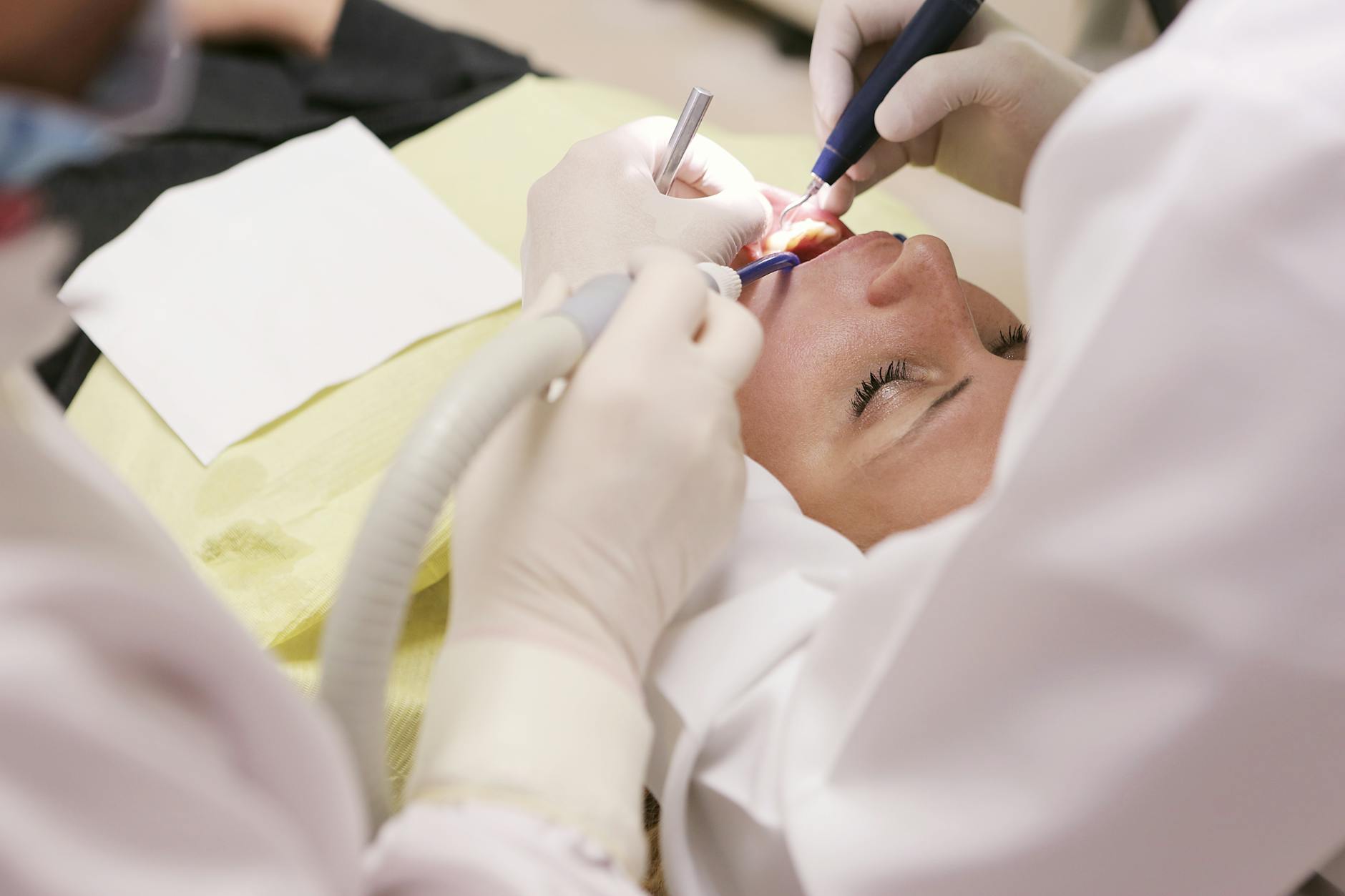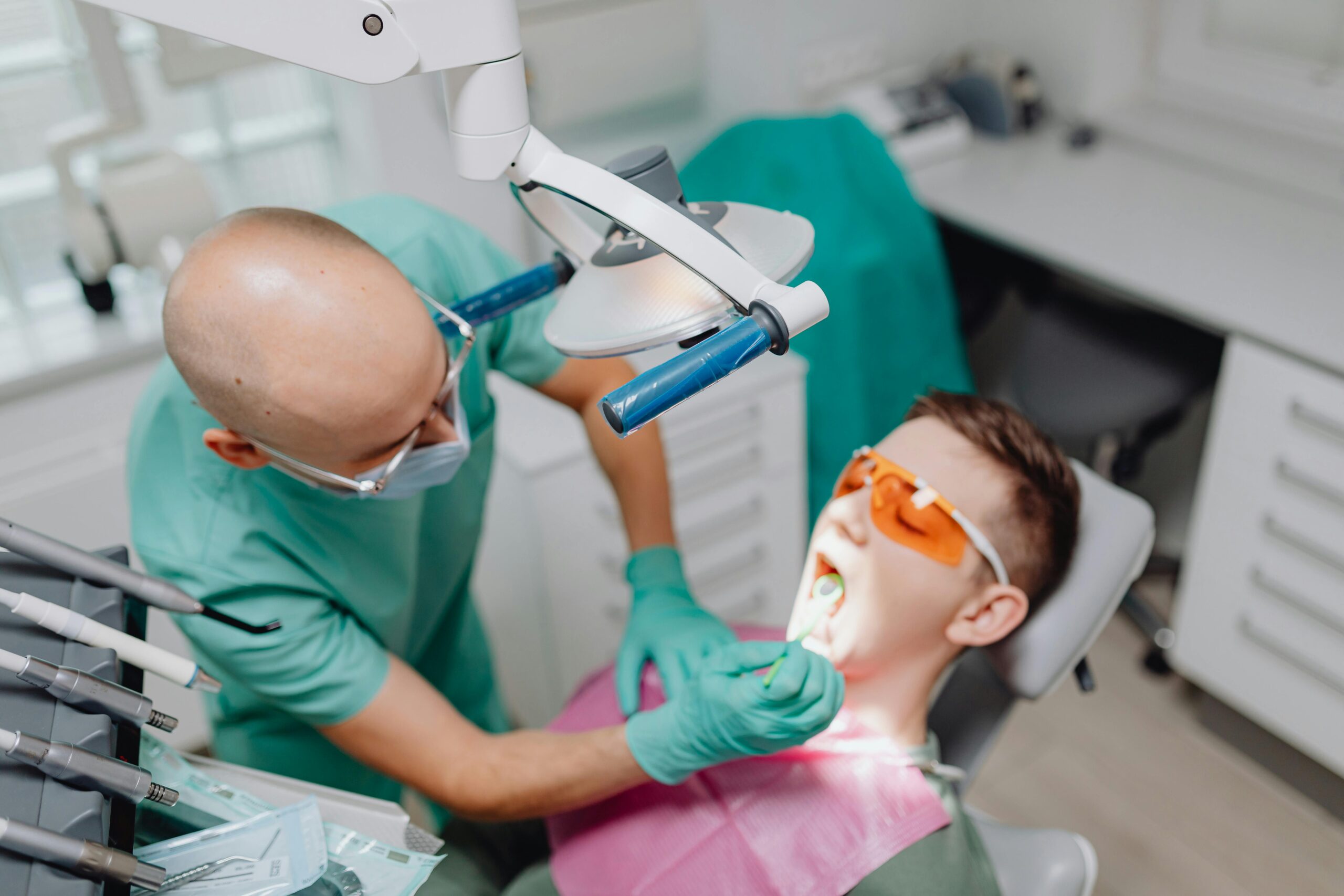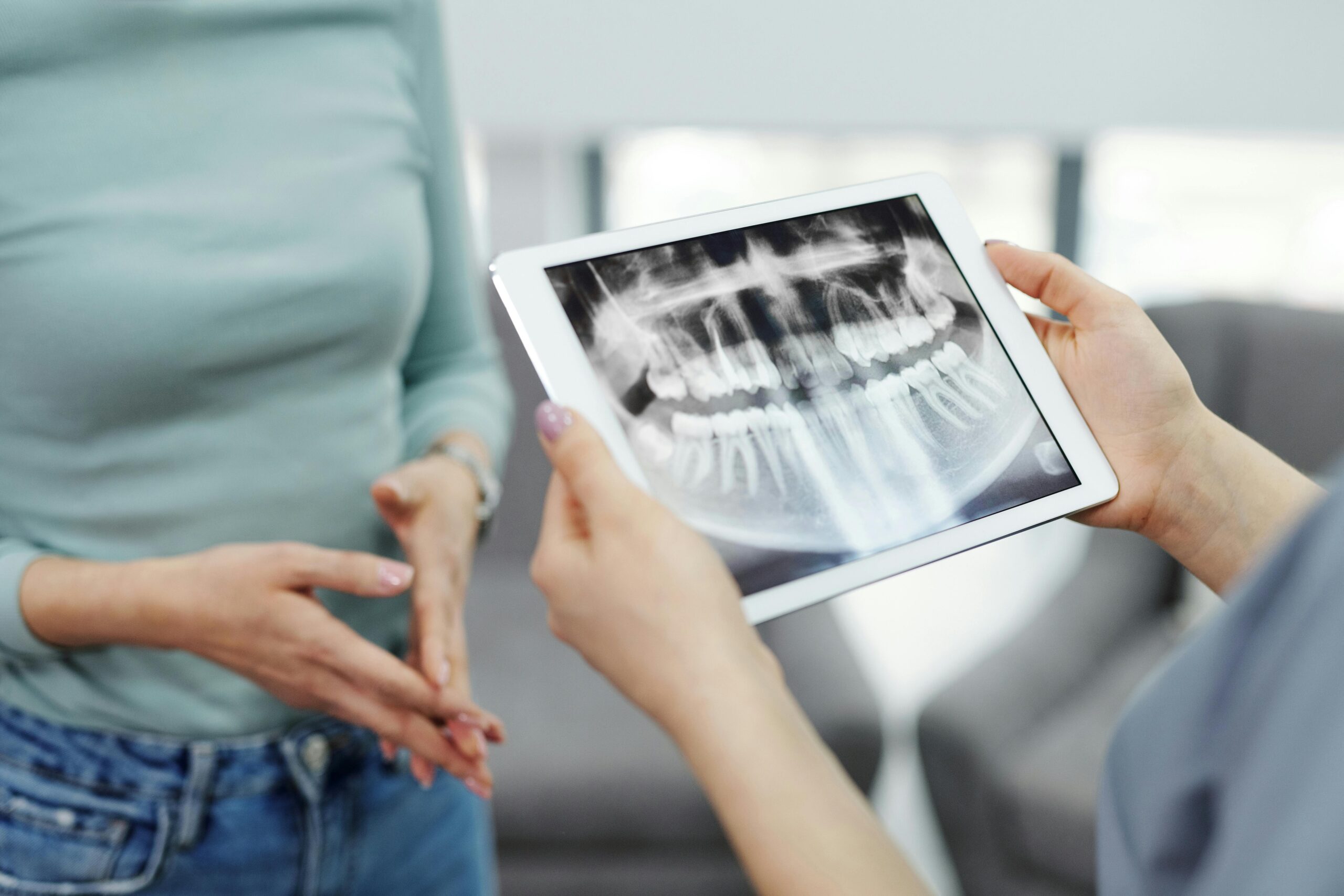Understanding Immediate Dental Implants
Immediate dental implants are placed at the same visit a failing tooth is removed. The goal is to use the existing socket to anchor a new implant right away, reducing the number of surgeries and potentially shortening overall treatment time. When the bone is strong, infection is controlled, and the gums are healthy, this approach can be as predictable as a staged plan.
In deciding between immediate vs delayed dental implants, I look for a few essentials: clean, infection-free conditions; enough bone to achieve firm initial stability; healthy, well-shaped gums; and a bite that won’t overload the area during healing. Medical factors (such as smoking or uncontrolled diabetes), a very thin bone wall, or a large defect may steer us toward a short period of healing and grafting before placement. Three-dimensional imaging helps confirm whether immediate placement can meet both functional and esthetic goals. If immediate placement isn’t ideal, a brief delay can protect long-term outcomes without compromising success.
- Keep the area clean and follow any gentle rinse instructions you were given.
- Choose softer foods and avoid chewing directly on the healing site.
- Avoid smoking or vaping to support gum and bone healing.
- If pain, swelling, or bleeding seems to worsen, contact our office promptly during business hours for in-person evaluation.
Advantages of Delayed Implant Placement
Delayed implant placement allows the extraction site and surrounding tissues to mature before the implant is inserted. This can lower the risk of infection, improve primary stability, and give better control over three-dimensional positioning for a natural result. It is especially helpful when the socket walls are thin or damaged, when there is active infection, or when bone or soft-tissue grafting is needed first.
By waiting several weeks to months, we can confirm bone quality, complete ridge preservation or augmentation, increase the band of keratinized tissue if needed, and fabricate accurate surgical guides. It also creates time to address sinus elevation, adjust a traumatic bite, or optimize systemic factors such as smoking cessation or blood sugar control, steps that support implant longevity. In the broader discussion of immediate vs delayed dental implants, the delayed pathway often provides higher predictability when long-term stability and esthetics are the priority.
- Sites with infection, cysts, or recent periodontal disease treatment
- Thin or missing facial bone, or fractures of the socket
- Planned bone or soft-tissue grafting, including sinus lift
- Medical or bite issues that benefit from stabilization before surgery
At home, keep the area clean with gentle saltwater rinses after 24 hours, avoid disturbing the site, and use over-the-counter pain relievers as directed on the label. If you notice increasing pain, swelling, or bleeding, please call the office during business hours for prompt in-person evaluation.
Factors Influencing Implant Timing
Choosing when to place an implant depends on the condition of the tooth and surrounding tissues. When I weigh immediate vs delayed dental implants, I look for biology that favors stability and a predictable cosmetic outcome. Active infection, inadequate bone, or thin, fragile gum tissue often point toward a staged approach, while a healthy socket with intact walls and the ability to secure firm primary stability may allow same-day placement. At home, keep the area clean and undisturbed, avoid hard chewing on the tooth, and call us during business hours so we can evaluate you promptly. Your medical history and treatment goals also influence the safest timeline.
- Site and bone quality: remaining volume/density, intact socket walls, and facial bone thickness to support tissue.
- Infection and periodontal health: presence of abscess or inflammation and the need for debridement or initial disease control.
- Primary stability and grafting: insertion torque achievable, gap width, and whether bone or soft-tissue grafting is indicated.
- Smile zone and esthetics: tissue biotype, gingival scallop, and whether we must shape the gum before restoration.
Systemic factors and habits: diabetes control, smoking/vaping, medications affecting bone, and nighttime clenching or bruxism.
Bite, anatomy, and logistics: occlusal forces, space for components, sinus/nerve proximity, and your schedule for follow-ups.
Patient Health and Implant Selection
Patient health guides whether I recommend placing an implant at the time of extraction or waiting for healing. For many, an immediate approach is reasonable when the socket is clean, bone walls are intact, and medical conditions are stable. If there is active infection, significant bone loss, or systemic factors that impair healing, a staged plan allows us to correct the site first. Framing the choice as immediate vs delayed dental implants keeps the focus on safety, stability, and long-term function.
Before surgery, I review your medical history, medications, and habits with simple goals: predictable healing and low risk. Key considerations include diabetes control, tobacco or vaping, history of periodontal disease, prior radiation to the jaws, autoimmune conditions, bruxism, and drugs that affect bone (such as long-term steroids or certain osteoporosis therapies). Locally, I look for thick, healthy gums, adequate bone volume and density, and the absence of pus or cysts; if any of these are lacking, we may graft first and return for the implant after the tissues mature.
- Keep the area clean: gentle brushing nearby and short, warm saltwater rinses.
- Use a cold compress for minor swelling; choose soft foods and chew away from the site.
- Avoid smoking or vaping while healing.
- If you notice increasing pain, swelling, bad taste, or a loose temporary, contact the office promptly during business hours.
Bone Quality and Immediate Implants
Bone quality—its density, thickness, and integrity after a tooth is removed—is a central factor in whether I place an implant right away. If the socket walls are intact and the bone is firm enough to hold the implant securely, an immediate approach may be appropriate; if the bone is thin, fragile, or infected, it’s safer to stage the process. In short, the condition of the bone often tips the balance when considering immediate vs delayed dental implants.
At your evaluation, I look for enough surrounding bone to achieve initial stability, the health of the extraction site, and whether the outer (buccal) plate is intact. I also consider bite forces, tooth position (front vs back), and gum tissue support. Three-dimensional imaging helps reveal hidden defects or soft areas that could undermine early stability. When the ridge is thin or there’s active inflammation, we may build support first and revisit implant placement once the site is calm and stronger. If you’ve recently lost a tooth, keep the area clean with gentle brushing nearby, avoid smoking, choose soft foods, and don’t poke the socket; a cool compress can help with normal swelling during the first day. Please contact a dental office promptly during business hours for a personalized exam and timeline.
Soft Tissue Considerations for Delayed Implants
The condition of the gums often determines whether I wait before placing an implant. If the tissues are thin, inflamed, or there isn’t a stable band of keratinized (attached) gum, a delayed approach lets us rebuild and mature the soft tissue first. This extra time can improve comfort, hygiene access, and the esthetic frame around the tooth, especially in the smile zone. When weighing immediate vs delayed dental implants, soft tissue quality often tips the balance.
Delaying gives room for soft tissue grafting to increase thickness and keratinized gum, for scars to settle after extraction, and for shaping the future gum line and papillae. It also allows any irritation from a failing tooth or infection to fully resolve, so we’re working with calm, healthy tissue. In many cases, we’ll contour the site with provisional components later to fine‑tune the emergence profile and support papillae before the final crown.
- Little or no attached (keratinized) gum around the site
- Thin or easily receding gum phenotype in a high‑smile area
- Residual inflammation, ulceration, or recent infection
- Shallow vestibule or strong frenum pull needing soft‑tissue revision
Lost papillae or uneven gum scallop that would benefit from grafting
At home while you’re waiting: gently brush nearby teeth with a soft brush, avoid picking or pulling the lip, and consider warm saltwater rinses to keep the area fresh. If you notice increasing swelling, bleeding, or a bad taste, please contact a dentist promptly during business hours for in‑person evaluation.
Case Studies: Immediate vs Delayed
These brief composite cases show how I decide when to place an implant at the time of extraction versus after healing. They highlight how infection control, bone volume, and soft-tissue support guide timing, not convenience. Together, they illustrate my criteria for immediate vs delayed dental implants.
Case 1 — Immediate: A healthy non-smoker cracked a lower premolar. Exam and 3D imaging showed solid bone with intact socket walls, no active infection, a thick gum biotype, and a stable bite. We removed the tooth gently, placed the implant the same visit with firm primary stability, and filled the small gap with particulate graft to preserve contour. A non-biting temporary kept the smile intact while the site healed. Immediate placement reduced visits and helped maintain the gum line because biology and mechanics were favorable.
Case 2 — Delayed: A front tooth with a failed root canal had a draining abscess and a thinned or missing buccal plate (the front bone wall). The soft tissue was delicate and recession risk was high. We extracted and thoroughly cleaned the site, placed a ridge-preservation graft, and let it mature for several months. After the tissue stabilized—and with a minor soft-tissue graft to thicken the gum—we positioned the implant in healthy, regenerated bone. Staging here lowered the chance of infection and improved esthetics long term.
- At home, keep the area clean with gentle brushing; avoid vigorous rinsing the first day, then use light saltwater swishes once or twice daily.
- Use a cold compress in short intervals the first day; choose soft foods; avoid smoking and straws.
- If you notice increasing pain, swelling, fever, persistent bleeding, or a loose-feeling temporary, contact our office promptly during business hours for in-person care.
Making the Right Choice for You
Choosing between placing an implant right after a tooth is removed or waiting for healing is personal and situational. I start by understanding your oral and general health, the condition of the tooth site, and your goals for function and appearance. Together, we’ll weigh the benefits and trade-offs so the timing supports long-term stability and a natural look.
In a consultation, I examine the gums and bone on 3D imaging when appropriate, review your medical history, and discuss your timeline. Common factors that guide my recommendation include:
- Presence of infection or active gum disease at the site
- Bone quality and quantity, and whether grafting is needed
- Condition of the socket after extraction (intact vs. damaged walls)
- Bite forces and esthetic demands (front teeth vs. back teeth)
Healing considerations such as medications or tobacco use
While you’re preparing for an evaluation or awaiting next steps, stick to gentle care: avoid chewing on the affected area, keep it clean without poking the site, use a soft diet if it’s tender, consider a cold compress for minor swelling, and use over‑the‑counter pain relievers as directed on the label. If a crown or temporary comes loose, avoid biting on it and save any parts. Please contact our office during business hours to arrange an in‑person exam—timely assessment helps determine whether immediate vs delayed dental implants will serve you best.
Frequently Asked Questions
Here are quick answers to common questions people have about Immediate vs. Delayed Implants: How I Decide in Glendale, AZ.
- What are immediate dental implants?
Immediate dental implants are placed right after a tooth extraction during the same visit. This approach utilizes the existing socket to anchor the implant, potentially reducing the total number of surgeries and shortening treatment time. The success of immediate implants depends on infection-free conditions, adequate bone density, healthy gums, and an appropriate bite that doesn’t overload the area during healing.
- When might delayed dental implants be recommended?
Delayed dental implants are often recommended when there is active infection at the site, thin or damaged bone, or when additional procedures such as bone or soft tissue grafting are necessary. This approach allows the extraction site to heal and mature, improving the stability and aesthetics of the implant. It provides time for addressing factors like sinus issues, bite adjustments, or systemic health conditions that could affect implant success.
- What factors influence the decision between immediate and delayed implants?
Deciding between immediate and delayed implants involves assessing the condition of the tooth and surrounding tissues. Factors such as the presence of infection, bone density and quality, condition of the gum tissue, and systemic health considerations like diabetes or smoking habits play crucial roles. The goal is to ensure that the timing supports a stable and esthetically pleasing outcome.
- How does bone quality affect the choice between immediate and delayed implants?
Bone quality is central to determining whether an implant can be placed immediately. Intact and dense bone can support immediate implants, while thin, fragile, or infected bone generally necessitates a staged approach for improved stability. Evaluations include checking socket integrity and using 3D imaging to identify potential defects that might affect implant success.
- Why is soft tissue condition important in deciding the implant timing?
The condition of the gums is crucial when choosing between immediate and delayed implants. Healthy, thick gums may support immediate placement, while thin or inflamed tissues often require a delayed approach to allow for healing and potential grafting. Delayed placement can improve gum appearance, comfort, and access for hygiene, especially in visible smile zones.
- What considerations are taken for patient health in implant timing?
Patient health considerations include managing systemic factors such as diabetes control, smoking, medications affecting bone health, and any active gum disease. Before determining the timeline for implant placement, a thorough review of medical history and habits ensures healing predictability and minimizes risks associated with surgery.
- How do infection and periodontal health impact implant timing?
Active infection or poor periodontal health at an extraction site can influence the decision to delay implant placement. Ensuring the site is infection-free helps promote a stable healing environment. A stage approach may be necessary to manage these conditions effectively before implant placement to enhance the chances of long-term success.
Medical sources (PubMed)
- Kullar AS, et al. Dent Clin North Am. 2019. “Are There Contraindications for Placing Dental Implants?”. PMID: 31097131 / DOI: 10.1016/j.cden.2019.02.004
- Sailer I, et al. Periodontol 2000. 2022. “Prosthetic failures in dental implant therapy.”. PMID: 35103329 / DOI: 10.1111/prd.12416
- Monje A, et al. Periodontol 2000. 2022. “Management and sequelae of dental implant removal.”. PMID: 35103326 / DOI: 10.1111/prd.12418
- Siadat H, et al. J Prosthodont. 2017. “Interim Prosthesis Options for Dental Implants.”. PMID: 26805651 / DOI: 10.1111/jopr.12421
- Suh Y, et al. Med Gas Res. 2019. “Clinical utility of ozone therapy in dental and oral medicine.”. PMID: 31552882 / DOI: 10.4103/2045-9912.266997
- Wei X, et al. Int J Oral Sci. 2022. “Expert consensus on regenerative endodontic procedures.”. PMID: 36450715 / DOI: 10.1038/s41368-022-00206-z




